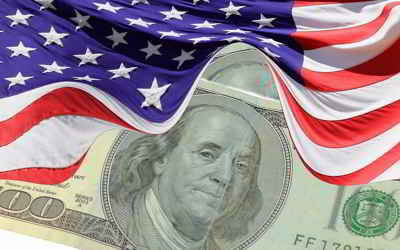Georgia Economy
Agriculture and Industry in Georgia
Georgia economy is a set of human and social activities and institutions related to the production, distribution, exchange and consumption of agriculture and industry goods and services. The balance between Georgia various economic sectors differs largely between various regions and other states in the US.Georgia Agriculture and Industry
Georgia's real gross state product in 2012 was estimated to be $374,000 which was $186,560 and 100% higher than the national state average, $187,440. Georgia has the 11th highest GSP out of the 50 states.
Georgia Agriculture:
Agriculture makes up a large part of Georgia's economy. The state's most important crops are peanuts, corn, cotton, peaches, soybeans and tobacco. The vast pine forests in the northern part of the state provide much of the world's supply of resins and turpentine.
Poultry and eggs, peanuts, cattle, hogs, dairy products, vegetables.
Georgia Industry:
Georgia is an important manufacturer of textiles, paper, food products, transportation equipment, clothing, and chemicals. Mines within the state produce barite - a mineral used in the manufacturing of rubber and paper - and bauxite - the ore from which aluminum is made. Georgia is also a leading producer of marble.
Textiles and apparel, transportation equipment, food processing, paper products, chemical products, electric equipment, tourism.
According to the original plans of Georgia's founders, its people were to be sober spinners of silk. The reality was far different, however; during
the period of royally appointed governors, Georgia became a replica of Carolina, a plantation province producing rice, indigo, and cotton. After the
Revolution, the invention of the cotton gin established the plantation system even more firmly by making cotton planting profitable in the piedmont.
Meanwhile, deerskins and other furs and lumber were produced in the backcountry; rice remained an important staple along the coast; turnpikes, canals,
and railroads were built; and textile manufacturing became increasingly important, especially in Athens and Augusta.
At the end of the Civil War, the state's economy was in ruins, and tenancy and sharecropping were common. Manufacturing, especially of textiles, was
promoted by "New South" spokesmen like Henry Grady of Atlanta and Patrick Walsh of Augusta. Atlanta, whose nascent industries included production of
a thick sweet syrup called Coca-Cola, symbolized the New South idea- then as now. Farmers did not experience the benefits of progress, however. Many
of them flocked to the mills while others joined the Populist Party in an effort to air their grievances. To the planters' relief, cotton prices rose
from the turn of the century through World War I. Meanwhile, Georgians lost control of their railroads and industries to northern corporations. During
the 1920s, the boll weevil wrecked the cotton crops, and farmers resumed their flight to the cities. Not until the late 1930s did Georgia accept Social
Security, unemployment compensation, and other relief measures.
Georgia's economy underwent drastic changes as a result of World War II. Many northern industries moved to Georgia to take advantage of low wages and
low taxes, conditions that meant low benefits for Georgians. The raising of poultry and livestock became more important than crop cultivation, and
manufacturing replaced agriculture as the chief source of income. In 1997, less than 1% of the employed labor force was working in agriculture; 32%
were service workers; 22% retail salespeople; and 19% were manufacturers. Georgia is a leader in the making of paper products, tufted textile products,
processed chickens, naval stores, lumber, and transportation equipment.
Textile manufacturing, Georgia's oldest industry, remains its single most important industrial source of income until 1999 when output from food processing
exceeded it. From 1997 to 2001, annual textile output declined 8.4% whereas output from food processing increased 12.1%. Other manufacturing sectors
were also increasing, so that from 1997 to 2000, there was an overall 16% increase in Georgia's manufacturing output. More than half of the gain was
lost, however, in the national recession in 2001, as manufacturing output fell 8.3% in one year, reducing the net gain since 1997 to 6.4%. By contrast,
output from general services increased nearly 40% 1997 to 2001, and from financial services (including insurance and real estate) increased almost
32%. Output from other service areas- wholesale and retail trade, transportation and public utilities, and government- all increased more than 25%
1997 to 2001. The national recession of 2000, however, impacted Georgia's economy worse than most, as its strong annual growth rates at the end of
the 20th century (8.2% in 1998, 8.5% in 1999 and 6.7% in 2000) dropped abruptly to 1.5% in 2001. The state lost more than 133,000 jobs from January
2001 to October 2002. Layoffs in the fourth quarter of 2002 amounted to a 2.2% increase over the fourth quarter of 2001, the worst performance in the
country.
Georgia's gross state product in 2001 was 10th in the nation at $299.9 billion, to which general services contributed $61.1 billion; financial services,
$49 billion; trade, $55.1 billion; government, $37.2 billion, transportation and public utilities, $33.4 billion, and manufacturing, $43.5 billion.
The public sector constituted 12.4% of gross state product.

US economy is relies on private decision-making ("economic freedom")




